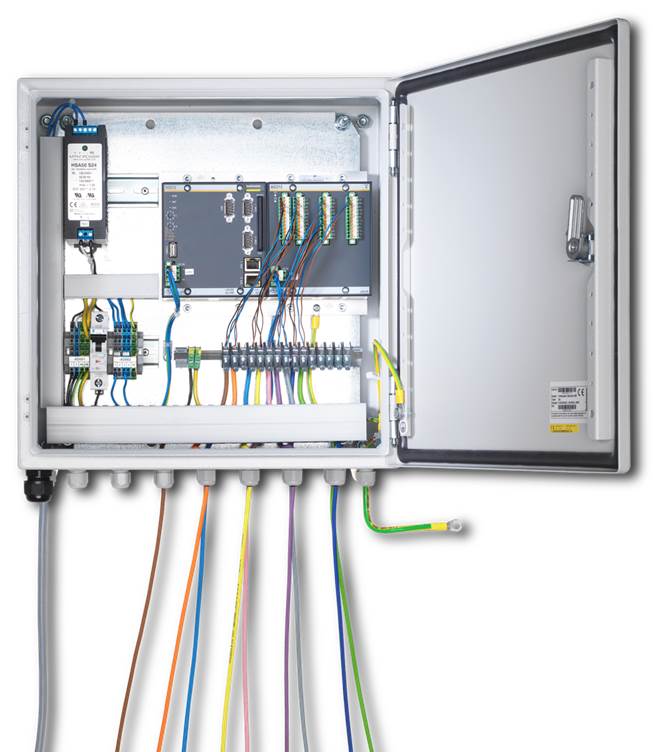Lessons Learned from a Large-Scale CMS Retrofit
 Large-scale Condition Monitoring System (CMS) retrofits can present an assortment of challenges. Project management issues present in smaller sized wind turbine retrofits are magnified as the scope of the project grows, necessitating implementation of project management fundamentals.
Large-scale Condition Monitoring System (CMS) retrofits can present an assortment of challenges. Project management issues present in smaller sized wind turbine retrofits are magnified as the scope of the project grows, necessitating implementation of project management fundamentals.
From 2012-2014, the CMS retrofit for 1310 turbines of 9 different make/models of wind turbines was undertaken. There were a total of 33 wind sites, with 23 locations in Europe and 10 locations in the United States. The CMS retrofits consisted of three styles of condition monitoring systems: stand-alone, top-box integrated, and fully integrated. Common amongst the CMS installations were the sensors, cabling, and CMS unit per tower. Outside of this standard hardware, some sites required customization to monitor additional components. Throughout the duration of the project, an assortment of challenges arose which can be separated into the following three categories: planning, documentation, and communication.
Planning – Anticipate issues ahead of time
Anticipating potential issues down the road and putting together mitigation strategies ahead of time is crucial. In order to prevent a bottleneck in the retrofit progress, it is important to ensure contingencies can be handled by local management without waiting on the project managers’ approval. Having predefined policies in place to deal with quality, change requests such as schedule and scope can significantly reduce pitfalls later on.
Gathering all relevant data ahead of time is vital to the successful completion of this scale of project with the deadlines given. For CMS, it is important to consider each unit as a complete integral system from sensors to the controller and the wind turbine communication system. Communication networks are the heart of CMS and it is easy to underestimate their importance. It is vital all communication infrastructure data and documentation be gathered ahead of time. This is one of the biggest sources of grievance seen with CMS retrofits.
Documentation – If it isn’t documented, it didn’t happen
Create a central project email account to ensure records are kept for every aspect of the project discussed during meetings or phone conversations. The account will serve as a repository for any correspondence related to the retrofit. Require all contractors, client personnel, and the technical team to cc all emails to the project email account.
Maintain an extensive project manual encompassing every aspect of the project. Use international and industry standards wherever applicable in order to avoid reinventing the wheel, and to establish a common naming convention. As part of the project management infrastructure, implement a numbering structure for contracts and sites, disciplines, work packages, inquiries, and orders and cost accounts.
The project manual will later be recognized as the bible of the project. For this reason, it is important it be commented and agreed upon, not only by the client’s project management team, but by the third party contractors as well. Completing this early on, helps to minimize future clarification efforts with sites, new team members, and subcontractors.
When anticipating the magnitude of data required for the project, make an effort to avoid what is termed “the Excel virus.” It is necessary to avoid everyone having their own private tracking documents. Implement a structured project management database for future reference and utilize the Reference Designation System for Power Plants (RDS-PP), a power plant specific nomenclature for standardized object structures based on ISO 81346 and ISO 16952-10.
Having clearly written documentation will prove itself invaluable throughout the project. The documentation will not only help with the planning of the project, but also directly lead to establishing clear lines of communication between all parties involved. This documentation will be one of the primary factors leading to project success.
Communication – Keep everyone in the loop
Communication issues are inevitable when a small compact team meets a complex, distributed, large corporate structure. Maintaining multiple points of contact within a customer organization can lead to issues completing tasks, as communication falls short of necessary decision-making personnel on either side. Also, due to the project magnitude, issues may be anticipated for completing the project within the specified timeframe or with an in-house installation team alone. Contracting third parties to aid in installation efforts introduces even more points of contact, opening the project up for communication breakdown and potential sources of error.
To mitigate issues arising from such a wide ranging project, hold status update meetings and rely upon extensive documentation. Hold periodic meetings with the entire project team every 6 weeks to provide a level of oversight for everyone to ensure the work is getting done according to schedule, and to guarantee no part of the project is left to interpretation. Clearly cover all project details and immediately address any issues. In the case of international projects, it’s important to hold status meetings in the country where the work is being performed.
Summary
The major takeaways from this project can be boiled down to three basic fundamental concepts: preparation, documentation, and communication. By establishing good project management fundamentals surrounding these three main topics, potential issues, inevitable on any project, can either be avoided or mitigated. In addition, establishing a quality project management team can help reduce the workload on everyone as they work to ensure project success.
Nicholas Waters is Bachmann electronic’s key account manager for CMS in North America.
Bachmann | www.bachmann.info
Volume: January/February 2016








